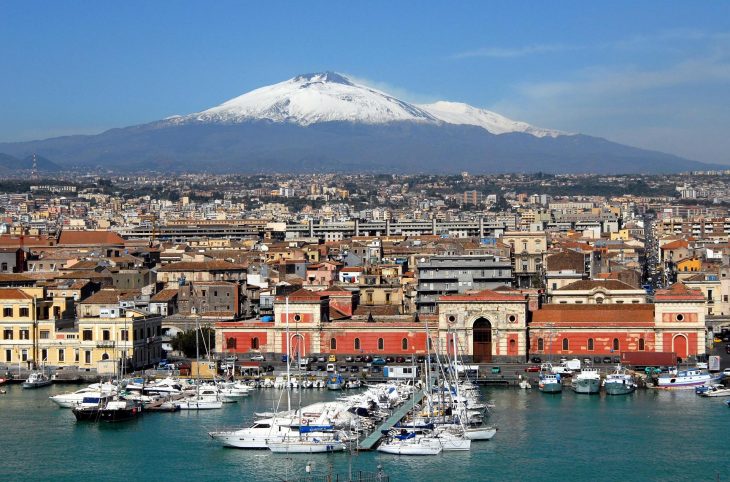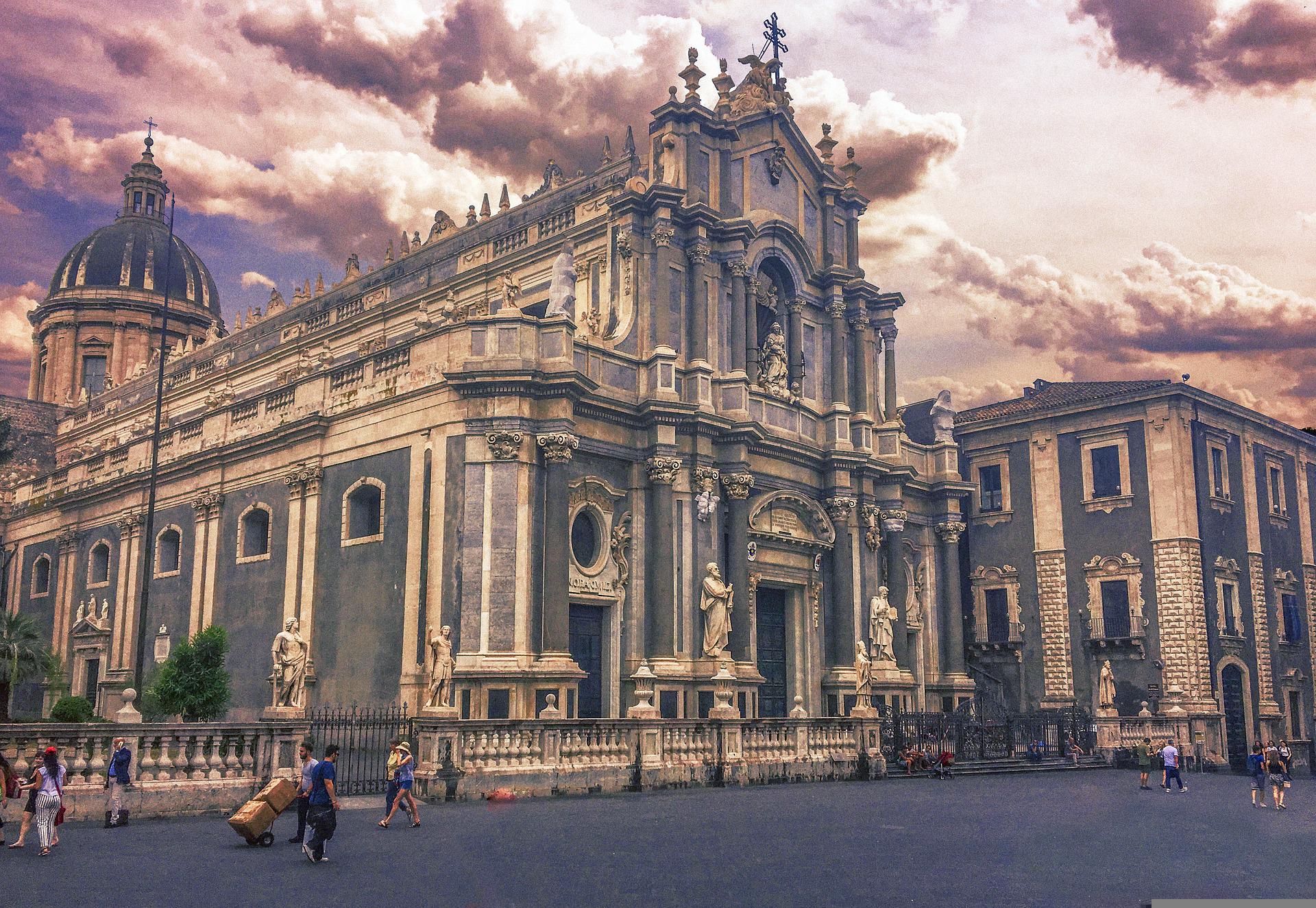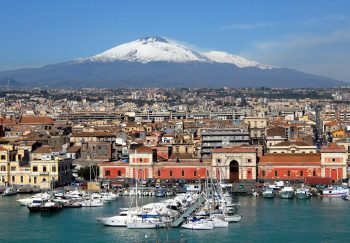Catania, Sicily’s second largest city, has a population of approximately 300,000. It is located on the Ionian Sea under the shadows of Mount Etna or A Muntagna to locals.
The ever-present Mount Etna has caused many volcanic eruptions that have destroyed Catania, the worst of which occurred in the 17th Century. Catania was covered with lava in 1669. Then, in 1693, an earthquake rocked the town to its foundations.
Mount Etna is always present and has shaped Catania’s history.
Amazingly, the town rebuilt its entire old section in Baroque style with wide, open squares and avenues after the second catastrophe. However, the most striking aspect was the use of lava as a building material. Catania is an “essentially grey” city, and the only one in the world.
It is easy to visit Catania, since the old town is small. Piazza Duomo, the main square, is a great place to start.

Giovanni Battista Vaccarini, Palermo’s one-man design team, created this charming square and all the surrounding buildings. ).
The cathedral, which is dedicated to St. Agata (the city’s patron saint), stands on the spot of an 11th century church that was nearly completely destroyed by the 1693 volcanic eruption. The replacement structure is an impressive and powerful Baroque structure, which incorporates some Roman columns from the amphitheatre. These Roman elements aren’t the only ones. There are also some Roman baths underneath. The interior is decorated with baroque elements, including several ornate chapels as well as a fresco that records the 1693 earthquake. Bellini, Catania’s most famous son is buried here. Also, in ash form, are three Aragonese Kings: Frederick II, Louis, and Frederick III.
Other sides of the square are equally impressive. They include the Diocesan Museum (town hall) and the Municipio (diocesan museum). Both were built in 1741. The city’s emblem, a lava fountain with an obelisk, is located in the middle. The mysterious inscription MSSHDEPL is written on the fountain. It is believed to be an acronym for “The mind and will of St. Agata is sane, spontaneous, honoring God, and liberating the City”. There are two additional churches named after St. Agata in Catania because of their devotion to her. One is just across the street from the Cathedral and the other is just a short distance away on Via Etnea.
You will continue south from the piazza and pass under the Porta Uzeda arch, a 17-century structure that leads to the port. You will find Catania’s bustling, colourful and delicious fish market by taking a quick right. You will find a completely different world if you arrive before lunch. It is an atmosphere that has not changed in hundreds of years.
You can avoid getting lost in the bustle of the market by heading south-west to Piazza Federico di Svevia or the old fortress Castello Ursino. Frederick II of Hohenstaufen built this impressive structure on a rock cliff that overlooks the sea in the 13th Century. The 1669 eruption caused a massive lava flow that pushed the sea back. This created a new coastline, and stripped Castello Ursino from its strategic position.
You will find a different side to the city if you go northwards. It is its ancient origins. Catania was established by Chalcis-Greek Greeks in the 8th century BC. The city became a Roman colony. Despite the many earthquakes and volcanic eruptions that have afflicted the region, three theatres survived.
Via Vittorio Emanuele’s Teatro Romano was built on the spot of a 2nd century CE Greek theatre. The Teatro Romano’s use of lava rock is a testament to the long life of Etna’s excrements. The Odeon is next door, which is a smaller theatre that’s used for intimate occasions such as musical performances. Piazza Stesicoro, at the intersection of Via Etnea, Corso Sicilia, is the amphitheatre. It is not normally open to the public but can be viewed from the outside. You should inquire about a tour as this amphitheatre, which was said to hold approximately 15,000 people, is worth visiting. It is surrounded by a fascinating network of passageways that reminds us of its larger cousin, the Colosseum.
A series of churches, as well as the Museo Belliniano dedicated to Catania’s most famous child, Vincenzo Bellini, are located around the amphitheatre. You can find Teatro Massimo Bellini, an opera house, just a short distance north. If opera is your thing, the opera season runs from October through June. It is worth a visit.
You can grab a bite at one of the many restaurants around the area after a performance. Pasta alla Norma is Catania’s signature dish. It consists of fried aubergine chunks, a rich tomato sauce, and salty ricotta Cheese Buon Appetito!
Villas in Sicily, near Catania
Insider tip: If your stomach is grumbling, head to Bar Savia in Via Etnea for some delicious arancini or cannoli.


